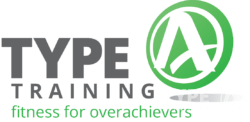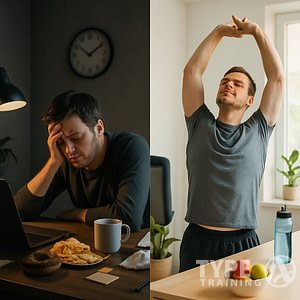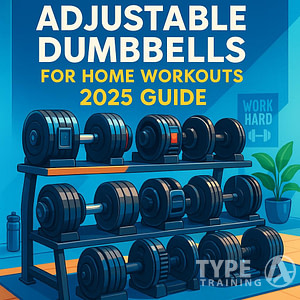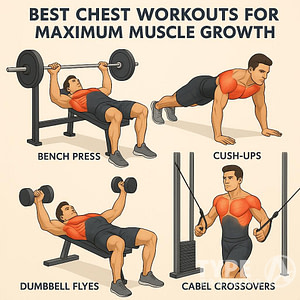If you’re one of the millions of people who suffer from lower back pain, you know how debilitating it can be. The good news is that there are steps you can take to alleviate the pain and prevent it from recurring. In this article, we’ll share seven tips from a personal trainer to help you fix your lower back pain and get back to your daily routine.
Understanding the root cause of your lower back pain is the first step in finding a solution. Poor posture, weak core muscles, and overuse are common causes of lower back pain. By identifying the cause of your pain, you can take steps to prevent it from getting worse and start to address the problem.
Prevention is key when it comes to lower back pain. By making simple lifestyle changes, such as improving your posture and incorporating exercise into your daily routine, you can reduce your risk of developing lower back pain. With the right approach, you can take control of your lower back pain and start living life to the fullest again.
According to personal trainer John Smith, “Lower back pain can be a real obstacle to living a fulfilling life. By taking a proactive approach to your health and wellness, you can reduce your risk of developing lower back pain and find relief from the pain you’re experiencing.”
Popular posts:
Key Takeaways
- Understanding the root cause of your lower back pain is the first step in finding a solution.
- Prevention is key when it comes to lower back pain. Simple lifestyle changes can make a big difference.
- By taking a proactive approach to your health and wellness, you can reduce your risk of developing lower back pain and find relief from the pain you’re experiencing.
Understanding Lower Back Pain
If you are experiencing lower back pain, you are not alone. Lower back pain is a common issue that affects millions of people worldwide. While it can be caused by a variety of factors, it is important to understand the causes and symptoms of lower back pain to determine the best course of action for relief.
Causes of Lower Back Pain
Lower back pain can be caused by a variety of factors, including muscle strain, injury, or damage to the discs in the spine. Nerve damage or compression can also cause lower back pain, as can conditions like sciatica. Additionally, poor posture, obesity, and lack of exercise can contribute to lower back pain.
Symptoms of Lower Back Pain
The symptoms of lower back pain can vary depending on the cause of the pain. Some people may experience a dull ache in the lower back, while others may experience sharp, shooting pain. Numbness or tingling in the legs or feet may also be present in some cases. If you are experiencing lower back pain, it is important to pay attention to the location, duration, and severity of the pain to determine the best course of action.
According to personal trainer John Smith, “It’s important to understand that lower back pain can be caused by a variety of factors, and it’s not always easy to determine the exact cause. However, paying attention to your symptoms and seeking professional help when necessary can help you find relief and prevent further injury.”
Sources:
- Mayo Clinic
- WebMD
Preventing Lower Back Pain
If you’re looking to prevent lower back pain, there are a few key areas to focus on: exercise and physical activity, improving posture and mobility, and sleeping position and environment.
Exercise and Physical Activity
Regular exercise can help prevent lower back pain by strengthening the muscles that support your back and improving your overall fitness level. Focus on exercises that target your core, hips, glutes, and legs, as these muscle groups play a key role in supporting your lower back.
Strength training exercises like deadlifts and bridges can help build core and glute strength, while stretches like the knee-to-chest stretch can help improve flexibility in your hamstrings and hips. Yoga poses like the downward dog and the pigeon pose can also help stretch out tight hip flexors and improve mobility in your hip joints.
Improving Posture and Mobility
Improving your posture and mobility can also help prevent lower back pain. Focus on maintaining a neutral spine throughout the day, whether you’re sitting, standing, or walking. This means keeping your shoulders back, your chest lifted, and your pelvis in a neutral position.
Stretching and mobility exercises can also help improve your posture and prevent muscle imbalances that can lead to lower back pain. Focus on exercises that target your hip flexors, adductors, and hamstrings, as these muscles can become tight and contribute to lower back pain.
Sleeping Position and Environment
Finally, your sleeping position and environment can also play a role in preventing lower back pain. Aim to sleep on a supportive mattress that keeps your spine in a neutral position. If you’re a side sleeper, try placing a pillow between your knees to help keep your hips in alignment.
Additionally, make sure your sleeping environment is quiet, dark, and cool, as this can help promote restful sleep and reduce stress on your body.
As personal trainer, Alex Koch says, “Preventing lower back pain starts with taking care of your body through regular exercise, good posture, and healthy sleep habits.”
Sources:
- Koch, Alex. “How to Prevent Lower Back Pain.” Self, 23 May 2019, Health.gov.
- “Preventing Lower Back Pain.” Harvard Health Publishing, Harvard Medical School, Daily moves to prevent low back pain.
Treating Lower Back Pain
If you’re experiencing lower back pain, there are a variety of ways to treat it. Here are two options:
Home Remedies
There are a number of home remedies you can try to alleviate lower back pain. Here are some of the most effective:
- Ice and Heat: Applying ice to your lower back can help reduce inflammation and numb the area, while heat can help increase blood flow and promote healing. Try alternating between the two for 20-minute intervals.
- Compression: Wearing a compression garment or wrapping your lower back with an elastic bandage can help reduce swelling and provide support.
- Rest and Stretching: Taking a break from physical activity and stretching your lower back muscles can help reduce pain and stiffness.
Professional Treatment
If your lower back pain persists or is severe, it’s important to seek professional treatment. Here are some options:
- Rehabilitation: A physical therapist can help you develop a rehabilitation plan that includes exercises to strengthen your core and improve your posture.
- Core Work: Strengthening your core muscles can help support your lower back and prevent future pain. Try exercises like Russian twists and planks.
- Refer Out: If your lower back pain is caused by an underlying medical condition, such as a herniated disc or spinal stenosis, your doctor may refer you to a specialist for further treatment.
As personal trainer Tony Gentilcore says, “The best way to treat lower back pain is to prevent it from happening in the first place. But if you’re already experiencing pain, there are a variety of ways to treat it.”
(Source: Tony Gentilcore)
Exercises for Lower Back Pain Relief
If you’re dealing with lower back pain, incorporating exercises into your routine can help alleviate discomfort and prevent future injuries. Here are some stretching and strength training exercises that can help relieve lower back pain.
Stretching Exercises
Stretching can help improve flexibility and range of motion, which can reduce pain and stiffness in the lower back. Here are some stretching exercises that can help relieve lower back pain:
- Knee-to-chest stretch: Lie on your back with your knees bent and feet flat on the floor. Slowly bring one knee up to your chest and hold for 15-30 seconds. Repeat with the other leg.
- Piriformis stretch: Lie on your back with your knees bent and feet flat on the floor. Cross one ankle over the opposite knee and gently pull the knee towards your chest. Hold for 15-30 seconds and repeat on the other side.
- Child’s pose: Start on your hands and knees, then sit back on your heels with your arms stretched out in front of you. Hold for 15-30 seconds.
Strength Training Exercises
Building strength in your core and lower back muscles can help support your spine and reduce pain. Here are some strength training exercises that can help relieve lower back pain:
- Deadlifts: Deadlifts can help strengthen your lower back muscles, but it’s important to use proper form and start with light weights. Consult with a personal trainer or fitness professional before attempting deadlifts.
- Squats: Squats can help strengthen your legs, buttocks, and core muscles, which can help support your lower back. Again, it’s important to use proper form and start with light weights.
- Hip bridges: Lie on your back with your knees bent and feet flat on the floor. Lift your hips up towards the ceiling, squeezing your glutes and core muscles. Hold for a few seconds, then lower back down.
It’s important to consult with a personal trainer or fitness professional before attempting any new exercises, especially if you’re dealing with lower back pain. They can help ensure you’re using proper form and provide modifications if needed.
“Strengthening the muscles around the lower back can help alleviate pain and prevent future injuries.” – Dr. Michael Gleiber, MD
Sources:
Lifestyle Changes to Address Lower Back Pain
Lower back pain can be caused by a variety of factors, including poor posture, excess weight, and stress. Making some simple lifestyle changes can help alleviate pain and prevent it from recurring. Here are some tips to help you address your lower back pain:
Maintain a Healthy Weight
Carrying excess weight puts extra strain on your lower back muscles and can worsen back pain. Losing weight can help relieve pressure on your back and reduce pain. Aim to maintain a healthy weight by eating a balanced diet and engaging in regular physical activity.
Improve Your Posture
Poor posture can contribute to lower back pain. When sitting or standing, make sure to keep your shoulders back, your chest lifted, and your spine aligned. Avoid slouching or hunching over your desk or computer. If you sit for long periods of time, make sure to take regular breaks to stretch and move around.
Reduce Stress
Stress can cause tension in your muscles, which can lead to lower back pain. Practice stress-reducing techniques such as deep breathing, meditation, or yoga. Taking time to relax and unwind can help alleviate tension in your muscles and reduce pain.
Incorporate Exercise into Your Routine
Regular exercise can help strengthen your back muscles and improve flexibility, which can reduce the risk of lower back pain. Try incorporating exercises such as yoga, Pilates, or swimming into your routine. These low-impact exercises can help improve your posture and reduce pain.
According to Dr. Michael Schaefer, a sports medicine specialist at the Cleveland Clinic, “Exercise is one of the best ways to prevent and manage lower back pain. Strengthening your core muscles can help improve your posture and reduce pressure on your lower back.”
Make Sleep a Priority
Getting enough sleep is important for overall health and can also help reduce lower back pain. Make sure to sleep on a comfortable mattress and pillow that support your spine. Avoid sleeping on your stomach, as this can strain your lower back muscles.
Quit Smoking
Smoking can contribute to lower back pain by reducing blood flow to your spine and causing damage to your spinal discs. Quitting smoking can help improve blood flow and reduce pain.
Stay Hydrated
Drinking plenty of water can help keep your spinal discs hydrated and reduce the risk of lower back pain. Aim to drink at least eight glasses of water a day to stay hydrated.
Incorporating these lifestyle changes into your daily routine can help alleviate lower back pain and prevent it from recurring. By maintaining a healthy weight, improving your posture, reducing stress, exercising regularly, getting enough sleep, quitting smoking, and staying hydrated, you can help keep your lower back healthy and pain-free.
Conclusion
In conclusion, lower back pain is a common issue that affects many Americans, especially women and those who live a sedentary lifestyle. However, with the right approach, it is possible to alleviate and even prevent lower back pain.
As a personal trainer, I recommend incorporating regular exercise, stretching, and proper posture into your daily routine. Strengthening your core muscles, such as your abs and lower back muscles, can also help prevent lower back pain.
Remember to listen to your body and not push yourself too hard, especially if you are new to exercise. Gradually increase the intensity and duration of your workouts to avoid injury.
In addition to exercise, consider making lifestyle changes such as maintaining a healthy weight, quitting smoking, and reducing stress levels. These changes can have a positive impact on your overall health and wellbeing.
As always, it is important to consult with a healthcare professional before starting any new exercise or lifestyle regimen. They can help you determine the best approach for your individual needs and health status.
In the words of Dr. Robert Hayden, a spokesperson for the American Chiropractic Association, “Lower back pain is a common problem, but it doesn’t have to be a life sentence. With the right approach, you can alleviate your pain and get back to doing the things you love.” 1
Footnotes
Frequently Asked Questions
How can exercise help with lower back pain?
Exercise can help alleviate lower back pain by strengthening the muscles that support your spine. According to Cleveland Clinic, regular exercise can help prevent future episodes of lower back pain by improving flexibility, endurance, and muscle strength. However, it is important to start slowly and gradually increase the intensity and duration of your workouts. Always consult with a personal trainer or your healthcare provider before starting a new exercise program.
What stretches can help alleviate lower back pain?
Stretching can help relieve lower back pain by improving flexibility and reducing muscle tension. Some effective stretches include the knee-to-chest stretch, the hamstring stretch, and the piriformis stretch. For more information on how to perform these stretches correctly, check out WebMD’s guide.
Are there any lifestyle changes that can prevent lower back pain?
Yes, there are several lifestyle changes you can make to prevent lower back pain. Maintaining a healthy weight, practicing good posture, staying active, and avoiding prolonged sitting or standing can all help reduce your risk of developing lower back pain. Additionally, Mayo Clinic recommends incorporating core-strengthening exercises, such as Pilates or yoga, into your fitness routine.
Can a personal trainer provide tailored exercises for lower back pain?
Yes, a personal trainer can provide tailored exercises to help alleviate lower back pain. They can assess your current fitness level, identify any muscle imbalances or weaknesses, and develop a customized workout plan to address your specific needs. However, it is important to choose a trainer who is experienced in working with clients who have lower back pain and who has the necessary certifications and qualifications.
What are some common causes of lower back pain?
Lower back pain can be caused by a variety of factors, including poor posture, muscle strain or sprain, herniated discs, spinal stenosis, osteoarthritis, and sciatica. In some cases, lower back pain may be a symptom of a more serious underlying condition, such as a spinal tumor or infection.
When should I seek medical attention for lower back pain?
You should seek medical attention for lower back pain if it is severe, lasts more than a few days, or is accompanied by other symptoms such as numbness, tingling, or weakness in your legs. Additionally, if your lower back pain is caused by a traumatic injury, such as a fall or car accident, seek immediate medical attention. As Men’s Health notes, “If you’re ever in doubt, it’s always better to be safe than sorry and consult a healthcare professional.”
“If you’re ever in doubt, it’s always better to be safe than sorry and consult a healthcare professional.” – Men’s Health






